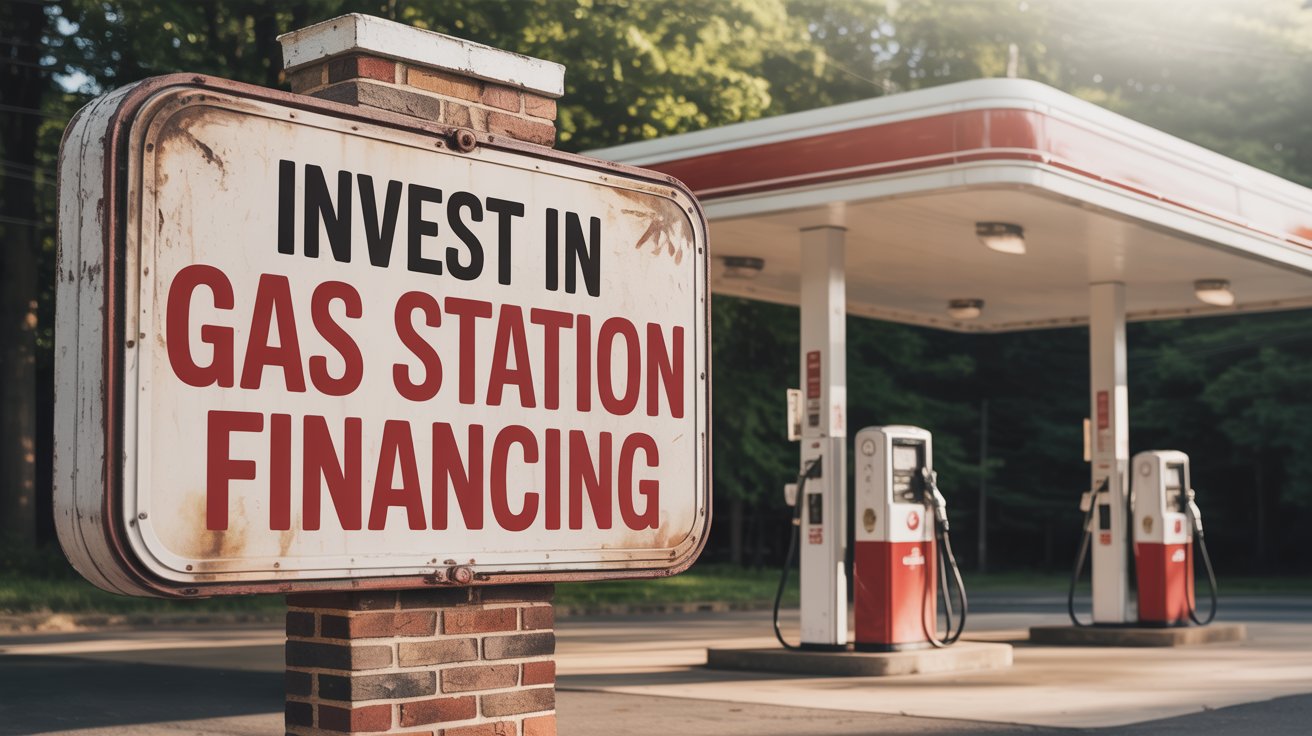Gas Station Financing Requirements: Everything You Need to Know Before Investing

Introduction
Gas stations remain a cornerstone of the American economy, blending fuel sales with convenience store offerings, car washes, and sometimes even quick-service restaurants. Yet, for entrepreneurs and investors, one of the most pressing questions is: what does it take to secure financing for a gas station? Lenders view these businesses as profitable but high-risk due to environmental exposure, fluctuating fuel margins, and specialized operational requirements. Understanding the full spectrum of gas station financing requirements is essential for turning your business plan into a reality.
In this article, we will break down the essential criteria lenders look for, from down payments and credit scores to environmental due diligence and underwriting metrics. Whether you’re a first-time buyer or an experienced operator, these insights will prepare you for a smoother loan process.
Snapshot: What Lenders Expect
Financing a gas station is very different from securing funding for a retail store or office building. Most lenders expect borrowers to bring between 10% and 30% in equity, though the exact percentage depends on whether you are using an SBA-backed loan or a conventional bank loan. For underwriting, lenders usually enforce a loan-to-value (LTV) ratio around 75% and require a Debt Service Coverage Ratio (DSCR) of at least 1.40. In addition, many lenders want borrowers to show a minimum credit score of 660 or higher and adequate management experience in fuel or retail operations.
For those without deep pockets, SBA programs such as the 7(a) or 504 loans offer more favorable terms, often allowing lower down payments and longer repayment periods.
Loan Types Available for Gas Stations
SBA 7(a) Loan
The SBA 7(a) loan is the most versatile financing tool for gas station buyers. It covers acquisitions that include both the business and real estate, along with equipment purchases, working capital, and even refinancing. Borrowers must meet SBA’s “credit elsewhere” requirement, meaning you must demonstrate that you cannot secure suitable financing through conventional lenders alone.
SBA 504 Loan
The SBA 504 loan is specifically designed for financing fixed assets such as land, buildings, and major equipment. It offers long-term, fixed-rate financing in partnership with Certified Development Companies (CDCs). This makes it particularly appealing for operators who plan to purchase or upgrade gas station real estate and infrastructure.
Conventional Financing
Conventional loans through banks or specialty lenders are another option, but they usually demand stronger borrower profiles. You can expect stricter DSCR and LTV requirements, as well as more substantial equity injections compared to SBA-backed programs.
Environmental Due Diligence
Environmental risk is the single largest concern lenders have when financing gas stations. Leaking underground storage tanks (USTs) can create contamination issues that result in six-figure cleanup costs. Because of this, lenders require a Phase I Environmental Site Assessment (ESA) conducted by a qualified Environmental Professional.
If the Phase I ESA identifies Recognized Environmental Conditions (RECs), then a Phase II ESA with soil and groundwater testing will likely be required. Additionally, most lenders insist on UST and line-tightness testing to ensure there are no leaks. The SBA has specific Standard Operating Procedure (SOP) appendices covering gas stations, and compliance with these requirements is non-negotiable.
Borrowers should budget for these costs, as environmental reports are typically the responsibility of the buyer.
Collateral and Loan Structure
Collateral plays a crucial role in gas station financing. Ideally, lenders prefer fee-simple ownership of the land and improvements, but many gas stations operate under long-term ground leases. In such cases, the lease terms must align with loan maturity, and unfavorable lease clauses can kill a deal.
Collateral often includes a mix of real estate, business goodwill, equipment, and inventory. Personal guarantees are common, and some lenders may require life insurance on the borrower to mitigate key-person risk.
Underwriting Metrics
Cash Flow Coverage
Cash flow is king in gas station financing. Most lenders require a DSCR of 1.40 or higher, meaning your net operating income must be at least 1.4 times your annual debt obligations. Add-backs such as depreciation or one-time expenses may be considered, but aggressive assumptions rarely pass scrutiny.
Leverage and Equity
A maximum LTV of 75% is common for conventional financing, though SBA loans can effectively provide higher leverage by blending different financing structures.
Credit and Experience
Lenders expect a FICO score above 660 and proven management experience. First-time buyers may face tougher scrutiny and may need to bring on an experienced operator or manager to satisfy lender concerns.
Working Capital
Most lenders want to see enough working capital to cover three to six months of operating expenses, ensuring the business can weather slow sales periods or fuel price volatility.
Property, Operations, and Compliance
Beyond financials, lenders will dig into the operational aspects of the station. They will review fuel supply agreements to assess volume commitments, penalties, and renewal terms. Equipment such as pumps and point-of-sale systems must be EMV compliant and up to date.
Other key considerations include environmental permits, fire and safety inspections, and insurance coverage—particularly pollution liability insurance, which is mandatory for many lenders. Operators should also be prepared to demonstrate healthy convenience store margins, as fuel sales alone often produce slim profits.
Required Documentation
A strong loan application package includes:
- Three years of business and personal tax returns
- Year-to-date profit and loss statement and balance sheet
- Supplier statements and fuel sales reports
- Purchase agreements, lease or deed documentation
- Phase I and Phase II ESAs, plus UST test results
- Personal financial statements and resumes
- A detailed business plan with forward-looking projections
Having these documents organized and ready demonstrates credibility and speeds up the underwriting process.
Appraisals and Third-Party Reports
A real estate appraisal is required to validate the property’s value and ensure the loan falls within LTV guidelines. In addition, environmental reports, tank testing, and sometimes ALTA surveys are required. Lenders often need reliance letters from consultants to rely legally on third-party reports.
Costs to Budget For
Beyond the down payment, borrowers should expect costs such as lender packaging fees, SBA guarantee fees, appraisal costs, and environmental assessments. A Phase I ESA can range from a few thousand dollars, while Phase II testing can escalate quickly depending on site conditions.
Red Flags That Can Kill a Loan
Several issues can derail financing. The biggest red flag is environmental contamination, especially unresolved spills or failed tank tests. Weak financial performance, poor credit history, or inflated projections can also raise red flags. Short ground leases or restrictive supply agreements may reduce collateral value and make lenders uneasy.
Step-by-Step Path to Loan Approval
- Pre-Screening: Review credit, liquidity, and management experience to determine eligibility.
- Term Sheet: Lenders issue a conditional term sheet outlining rates, terms, and environmental contingencies.
- Due Diligence: Appraisals, environmental assessments, and compliance checks are ordered.
- Final Approval: Conditions such as insurance binders, supplier estoppels, and permits are satisfied.
- Closing: Funds are disbursed, and post-closing reporting obligations begin.
Special Considerations for First-Time Buyers
First-time buyers face stricter requirements. Lenders often demand larger equity injections, stronger personal guarantees, and proof of operational support. Bringing in a manager with gas station or c-store experience can improve approval odds significantly.
Frequently Asked Questions
What’s the most important gas station financing requirement?
A Phase I ESA is essential—no lender will close without environmental clearance.
Can I finance new pumps or POS systems?
Yes, especially under SBA 7(a) loans, which cover equipment and business upgrades.
What ratios do lenders look at?
Typically, 75% LTV and a 1.40 DSCR minimum are required benchmarks.
Conclusion
Securing financing for a gas station requires much more than good credit and a business plan. From environmental due diligence to strong cash flow metrics, lenders scrutinize every aspect of the business. By understanding gas station financing requirements in advance, you can prepare a complete package that reduces delays and increases your chance of approval.
For aspiring owners, the path may seem complex, but with the right preparation and professional guidance, financing a gas station is both achievable and rewarding.
Do Read: Does Everyone on the Team Get a Ring? Eligibility Guide






